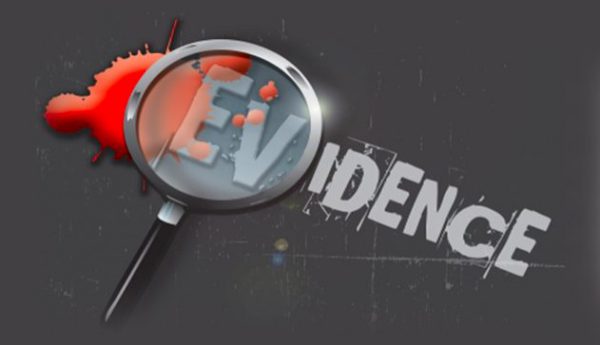This article has been written by Saurav Narayan, pursuing a Certificate Course in Advanced Criminal Litigation & Trial Advocacy from LawSikho.
Table of Contents
Introduction
Fīat jūstitia ruat cælum is a Latin legal expression that means, “Let justice be done though the heavens fall.” The maxim manifests the notion that justice must be served regardless of the consequences. Letting the criminal escape is not doing justice. A bench who is conducting the court case not only to ensure that no sinless is punished but also to see that the criminal does not escape. According to Tomlin’s Law Dictionary, evidence is “the means from which an inference may logically be drawn as to the existence of a fact. It consists of proof by the testimony of witnesses, on oath; or by writing or records. According to Section 3 of the Indian Evidence Act,1872 ‘evidence’ means and includes all statements, which the Court permits or requires to be made before it by witnesses, in relation to matters of fact under enquiry and all documents including electronic records produced for the inspection of the Court. In this article, we will discuss the recent landmark judgment of the Supreme Court to find out the answer to the moot question of whether exaggerated evidence by a witness was discarded?
Achhar Singh vs. State of Himachal Pradesh
The fact of the case
The facts of the case go as on the 23rd of February 1996, assailants, including Achhar Singh and Budhi Singh, unlawfully entered the home of complainant Meera Devi (PW)- (wife of Netar Singh) and mother Swari Devi (Deceased). The appellants were armed with axes, while the rest of the assailants were armed with sickles, spears, and sticks. Budhi Singh attacked Swari Devi with an axe which led to her death instantly, while Achhar Singh hit Beli Ram (injured witness) with an axe, he lost consciousness after that. The complainant was also beaten with sticks by other villager’s/assailants throughout this scuffle, and she fled to save her life. The complainant went barefoot from her hometown to the police station, which was 24 kilometres away. On the 24th of February 1996, at 9.30 a.m., an FIR was registered.
The grounds on which the trial court acquitted the accused
Statements given by prosecution witnesses were exaggerated which was made regarding the multiple times’ axe was blown by appellants on the deceased. (Some say once, while others say twice – nature is paradoxical)
- The medical report of injured witness Beli Ram does not support the complainant’s statement.
- Delay in registration of FIR.
- The complainant has provided no evidence to support her claim that the telephone network in the nearby village is not available.
Further, the State went to the High Court. The trial court’s acquittal order was overturned by the High Court.
Achhar Singh was found guilty of violating Sections 452( House-trespass after preparation for hurt, assault or wrongful restraint), 326(Voluntarily causing grievous hurt by dangerous weapons or means), and 323(Punishment for voluntarily causing hurt) of the Indian Penal Code and sentenced to five years in prison. Budhi Singh was found guilty of violating Sections 302 (Punishment for murder)and 452(House-trespass after preparation for hurt, assault or wrongful restraint) of the Indian Penal Code and sentenced to life in jail and a fine. Achar Singh and Budhi Singh had challenged their convictions in the Supreme Court.
Issue
Apart from the moot question, the main issue before the Supreme Court was whether the high court, while exercising its powers under Section 378 of the Code of Criminal Procedure, 1973 (CrPC), was justified in interfering with the acquittal by the trial court?
Arguments made by the appellant
The appellant-convicts (Achhar Singh and Budhi Singh) through their counsel argued that the prosecution witnesses’ testimonies were exaggerated and that it was, therefore, incorrect to convict him based on them. According to the FIR, the deceased died because of a single axe blow from the accused, and the post-mortem examination revealed that she had only one head injury. However, three prosecution eyewitnesses testified that the first accused struck her in the head twice with an axe and that the co-accused also struck her in the left ear twice with an axe.
Arguments made by the state
On the other hand, citing Sheikh Hasib @ Tabarak v. State of Bihar and Dharma Rama Bhagare v. the State of Maharashtra, the State’s counsel argued that the FIR was not a substantive piece of evidence and could only be used to refute or corroborate the maker of the FIR and not other witnesses. He argued that the witnesses’ integrity could not be called into doubt simply because they were linked to the deceased (citing the State of UP v. Kishan Chand) or because slight inconsistencies or exaggerations existed (relying on Leela Ram v. the State of Haryana). It was argued that inconsistencies in prosecution witness testimony against one convict should not be used to grant the benefit of the doubt to another.
Analysis of the issue
Before answering the main issue and the moot question the Supreme Court went into detail about criminal jurisprudence. It is a fundamental principle of criminal jurisprudence that everyone is presumed innocent unless proven guilty because criminal accusations can be thrown at anyone who is not a criminal. In the gap between the accusation and the verdict, the suspect is presumed to be innocent. The presumption of innocence is mandated by Article 11 of the Universal Declaration of Human Rights, Article 14 of the International Covenant on Civil and Political Rights, and Article 6 of the European Convention on Human Rights.
An essential feature of Indian Common Law Criminal Jurisprudence is that a person must be presumed innocent unless proven guilty. Except where the presumption of innocence has been statutorily waived, such as under Section 113B of the Evidence Act, 1872, the prosecutor is required to prove the accused’s guilt. Regardless, one of the aspects of presumed innocence is the “Right of Silence” provided by the Constitution of India Under Article 20(3).
The presumption of innocence, until the accused is proven guilty, is an important part of the Indian criminal justice system, as per the constitutional mandate and the scheme of the Code of Criminal Procedure, 1973. When a competent Court reviews the material facts, examines witnesses and acquits the accused, the presumption of innocence is doubled.
The Supreme Court responded affirmatively to the main issue and said “there is no gainsaid that homicidal deaths cannot be left to judicium dei (The judgment of God)” In the search for the reality, the court should make serious efforts to extract gold from the heap of black sand. The solemn responsibility is to ascertain the authenticity. The benefit of the doubt is only granted when the court, through its best efforts, is unable to draw a definite conclusion.
In response to the appellants’ contention that an appellate court cannot reverse a trial court’s decision unless it is found to be “perverse,” the Supreme Court stated that it is necessary to note that in this case, the trial court was overcome by several inconsistencies and failed to find and appreciate material admissible evidence against the appellants. According to the Supreme Court, the trial court erred in reaching the wrong conclusions.
The appellate courts have established a self-restraint strategy in which, where two reasonable and possible views emerge, the one favourable to the accused is followed while preserving the trial court’s proximity to the witnesses and direct interaction with testimony. Interference is not pushed in such situations unless perversity is found in the decision-making process.
Court further narrated the difference between ‘exaggeration’ and ‘false’ and said Cambridge Dictionary defines “exaggeration” as “the fact of making something larger, more important, better or worse than it really is”. Merriam-Webster defines the term “exaggerate” as to “enlarge beyond bounds or the truth”. The Concise Oxford Dictionary defines it as “enlarged or altered beyond normal proportions”. These phrases clearly imply that the origin of an “exaggerated statement” is a true reality to which fictional modifications are made to make it more penetrative. As a result, each exaggeration contains elements of the truth. Without any degree of truth, no exaggerated statement is possible. The Advanced Law Lexicon, on the other hand, describes “false” as “erroneous, untrue; opposite of correct, or true.” According to the Oxford Concise Dictionary, “false” means “wrong; not correct or true.” Similar explanations can be found in other dictionaries as well. As a result, there is a clear distinction between an “exaggerated version” and a “false version.” An exaggerated statement contains both truth and falsity, while a false statement contains no truth (being the polar opposite of the word ‘true’).
The bench noted that, even if the exaggeration of several axe strikes to the deceased were dismissed, the charge that the accused entered the victims’ house armed with an axe and hit the deceased on the head, and that she died as a result of a head injury, was consistent and undisputed during the FIR and deposition by a prosecution witness.
The principle that if two views are possible, the High Court should not interfere with the trial court’s decision is thus well established. However, such a precautionary principle cannot be extended so far as to imply that the “contours of an appeal” against an acquittal under Section 378 CrPC are restricted to determining whether the trial Court’s view was irrational. As a result, the Supreme Court decided that, based on a thorough examination of the trial court and high court documents, the high court was justified in interfering with the trial court’s erroneous conclusions and in preventing a miscarriage of justice by separating grain from husks, resulting in the appellants’ conviction.
Conclusion
It is said that to make a mountain out of a molehill, the molehill must first exist. A court of law, mindful of this distinction, is required to disseminate “truth” from “falsehood” and to separate the grain from the chaff in the case of exaggerations. Only when the grain and the chaff are so inextricably entangled that no real proof survives their separation can the whole evidence be dismissed. Therefore, evidence given by a witness cannot be discarded as a whole on the ground that it is exaggerated.
Students of Lawsikho courses regularly produce writing assignments and work on practical exercises as a part of their coursework and develop themselves in real-life practical skills.
LawSikho has created a telegram group for exchanging legal knowledge, referrals, and various opportunities. You can click on this link and join:












